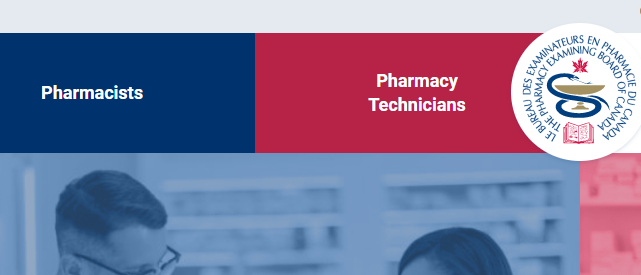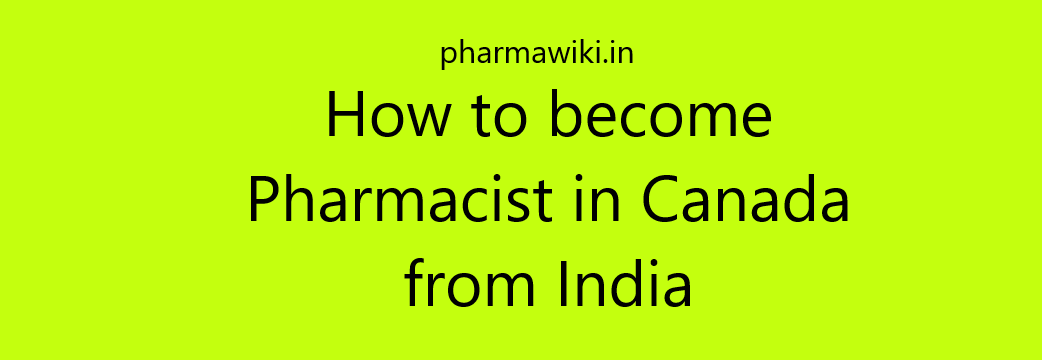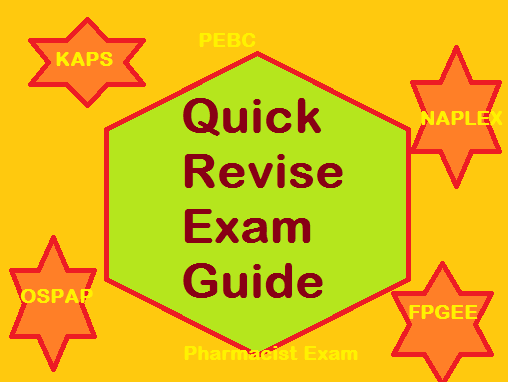Pinnacle of Pharmaceutical Education: Top Universities in Australia for MS in Pharmacy
Australia’s pharmaceutical landscape is experiencing unprecedented growth, with an increasing demand for skilled professionals. Pursuing a Master of Science (MS) in Pharmacy in Australia is not just a pathway to a rewarding career but an opportunity to immerse oneself in a vibrant academic and cultural environment. In this comprehensive guide, we will explore the significance of selecting the right university, delve into the top pharmacy universities in Australia, understand admission requirements, discover financial aid options, and uncover the exciting career prospects awaiting graduates.
The Thriving Pharmaceutical Landscape in Australia
Australia’s pharmaceutical sector is evolving rapidly, driven by factors such as an aging population, advances in healthcare, and the increasing focus on preventative medicine. This growth has led to a burgeoning demand for qualified pharmacy professionals.
Pursuing an MS in Pharmacy: A Pathway to Excellence
Obtaining an MS in Pharmacy is not only a testament to academic achievement but also a stepping stone toward a fulfilling and impactful career in healthcare. It equips students with the knowledge and skills required to excel in various pharmaceutical roles.
Significance of Choosing the Right University
Selecting the right university for your pharmacy education is a critical decision that can significantly shape your future. Let’s explore why this choice is vital and the key factors to consider when making it.
The Impact of University Choice on Your Career
The university you attend plays a pivotal role in your career prospects. Employers often value degrees from well-regarded institutions, which can open doors to exciting job opportunities.
Key Factors to Consider When Selecting a Pharmacy Program
Accreditation: Ensure that the pharmacy program you choose is accredited by relevant authorities, ensuring the quality and recognition of your degree.
Research Opportunities: Universities with strong research programs offer students the chance to engage in cutting-edge pharmaceutical research, enriching their academic experience.
Location: Consider the geographical location of the university and whether it aligns with your personal preferences and career goals.
Cost and Financial Aid: Evaluate the total cost of your education, including tuition, living expenses, and available financial aid options.
Alumni Network: A robust alumni network can provide valuable connections and mentorship opportunities, facilitating your professional growth.
Top Pharmacy Universities in Australia
Australia is home to several prestigious universities renowned for their pharmacy programs. Let’s delve into some of the top choices:
Monash University
A Beacon of Pharmacy Excellence
Monash University consistently ranks among the top pharmacy programs globally, known for its rigorous curriculum and outstanding faculty.
Research Prowess and Innovation
Monash University boasts numerous research centers and labs, offering students unparalleled opportunities to engage in cutting-edge research.
Alumni Success Stories
Graduates of Monash’s pharmacy program have gone on to achieve remarkable success in various sectors of the pharmaceutical industry.
University of Sydney
Sydney Pharmacy School: A Leading Light
The University of Sydney’s Sydney Pharmacy School is known for its commitment to excellence in pharmacy education.
Research and Industry Collaborations
The university actively collaborates with industry partners and research institutions, providing students with exposure to real-world pharmaceutical challenges.
Student Life in Sydney
Studying in Sydney offers students a vibrant and diverse cultural experience, with access to a wide range of extracurricular activities.
University of Queensland (UQ)
UQ’s School of Pharmacy: A Trailblazer
The University of Queensland’s School of Pharmacy is known for its comprehensive curriculum and dedication to pharmaceutical education.
International Opportunities
UQ offers international students a welcoming environment and various support services to help them adapt to life in Australia.
Campus and Facilities
The university provides state-of-the-art facilities and resources to support pharmacy students in their academic journey.
University of Melbourne
Faculty of Pharmacy and Pharmaceutical Sciences
The University of Melbourne’s faculty is globally recognized for its commitment to advancing pharmaceutical education and research.
Globally Recognized Research
The university is at the forefront of pharmaceutical research, contributing to groundbreaking discoveries in the field.
Melbourne’s Cultural Hub
Studying in Melbourne offers students access to a thriving cultural scene, making it a city that truly caters to a diverse range of interests.
University of Western Australia (UWA)
UWA’s School of Pharmacy and Biomedical Sciences
UWA’s School of Pharmacy and Biomedical Sciences provides students with a dynamic and supportive learning environment.
Unique Programs and Research Initiatives
The university offers unique pharmacy programs and is actively involved in cutting-edge research.
Life in Perth
Studying in Perth offers students a high quality of life, with access to stunning beaches and a relaxed lifestyle.
Griffith University
School of Pharmacy and Pharmacology
Griffith University’s School of Pharmacy and Pharmacology emphasizes clinical skills and practical training.
Emphasis on Clinical Skills
The program focuses on providing students with the practical skills needed for a successful pharmacy career.
Thriving Gold Coast Lifestyle
Studying on the Gold Coast offers students a vibrant and exciting lifestyle with beautiful beaches and recreational activities.
University of South Australia (UniSA)
School of Pharmacy and Medical Sciences
UniSA’s School of Pharmacy and Medical Sciences offers a comprehensive pharmacy education with a strong practical focus.
Focus on Practical Training
The program emphasizes practical training, ensuring that graduates are well-prepared for real-world pharmacy practice.
Adelaide’s Vibrancy
Adelaide offers students a vibrant cultural and social scene, creating a balanced and enriching student experience.
James Cook University (JCU)
College of Medicine and Dentistry
JCU’s College of Medicine and Dentistry provides students with a unique perspective on pharmacy practice, with a focus on rural and remote health.
Rural and Remote Health Focus
The university’s location in northern Queensland offers students opportunities to engage with rural and remote healthcare settings.
Tropical Queensland Experience
Studying in tropical Queensland provides students with a unique and enriching experience surrounded by natural beauty.
University of Newcastle
School of Biomedical Sciences and Pharmacy
The University of Newcastle’s School of Biomedical Sciences and Pharmacy offers diverse research opportunities.
Research Opportunities
The university actively promotes research in pharmaceutical sciences, allowing students to engage in meaningful research projects.
Newcastle’s Charm
Newcastle offers students a friendly and welcoming community with access to beautiful beaches and a relaxed lifestyle.
University of Tasmania
School of Medicine, Pharmacy and Health Sciences
The University of Tasmania’s School of Medicine, Pharmacy, and Health Sciences fosters interdisciplinary learning.
Interdisciplinary Learning
Students benefit from a curriculum that encourages collaboration across healthcare disciplines.
Tasmania’s Natural Beauty
Studying in Tasmania provides students with access to stunning natural landscapes, making it an ideal location for those who appreciate the outdoors.
Admission Requirements
Admission requirements for pharmacy programs in Australia typically include the following:
Common Admission Prerequisites
Bachelor’s Degree: A completed bachelor’s degree, often with specific prerequisite courses in biology, chemistry, and mathematics.
Academic Transcripts: Submission of official academic transcripts from all previously attended institutions.
Letters of Recommendation: Usually, two to three letters of recommendation from academic or professional sources.
Statement of Intent: A personal statement outlining your academic and career goals.
Interview: Some programs may require an interview as part of the admission process.
Language Proficiency Tests (IELTS, TOEFL)
English Language Proficiency: For international students, proof of English language proficiency is often required, typically through tests like IELTS or TOEFL.
Entrance Exams (if applicable)
Some universities may require students to take entrance exams, such as the Graduate Record Examination (GRE) or the Pharmacy College Admission Test (PCAT).
Australia Scholarships and Financial Aid
Pursuing higher education can be a significant financial investment. Fortunately, there are various scholarship and financial aid options available to international students pursuing pharmacy programs in Australia.
Government Scholarships and Grants
Australian Government Scholarships: The Australian government offers various scholarships and grants to international students, including the Australia Awards Scholarships and the Endeavour Scholarships and Fellowships.
University-specific Scholarships
Entrance Scholarships: Many universities offer scholarships specifically for incoming international students based on academic merit.
Pharmacy Program Scholarships: Some pharmacy programs have scholarships designated for pharmacy students.
External Funding Sources
International Scholarships: Various organizations, both public and private, offer scholarships to international students pursuing higher education in Australia.
Pharmaceutical Industry Scholarships: Some pharmaceutical companies offer scholarships to students pursuing pharmacy degrees.
Career Opportunities and Networking
Pharmacy programs in Australia provide numerous opportunities for students to build their careers and professional networks.
Cooperative Education and Internship Programs
Co-op Opportunities: Several pharmacy programs in Australia offer co-op or internship opportunities, allowing students to gain hands-on experience in healthcare settings.
Career Services and Support
Career Guidance: Universities often provide career counseling services to help students explore career options and prepare for job searches.
Job Placement: Some programs have strong connections with employers in the healthcare industry, facilitating job placement for graduates.
Professional Associations and Networking Events
Pharmacy Associations: Joining professional associations like the Pharmaceutical Society of Australia (PSA) can provide access to networking events and resources.
Conferences and Seminars: Universities frequently host conferences, seminars, and workshops, offering students opportunities to network with industry professionals.
Life as an International Student
Studying abroad is not just about academics; it’s also about adapting to a new culture and environment.
Adapting to Australian Culture
Orientation Programs: Most universities offer orientation programs to help international students acclimate to Australian culture and campus life.
International Student Services: Dedicated services and support are available to assist international students with immigration, housing, and cultural integration.
Student Accommodation Options
On-Campus Housing: Many universities provide on-campus housing options for international students.
Off-Campus Housing: Alternatively, students can explore off-campus housing options near the university.
Campus Resources and Facilities
Library and Research Facilities: Access to well-equipped libraries and research facilities is essential for academic success.
Health Services: Universities typically have health services to address students’ medical needs.
Challenges and Opportunities in Australian Pharmacy Education
While Australian pharmacy programs offer exceptional opportunities, they also come with their set of challenges and opportunities:
Current Trends in Pharmacy Education
Shift towards Clinical Focus: Pharmacy education is evolving to place a stronger emphasis on clinical skills and patient-centered care.
Interprofessional Collaboration: Collaboration among healthcare professionals is becoming increasingly important, with pharmacy graduates playing vital roles in healthcare teams.
Addressing Challenges and Seizing Opportunities
Adapting to Technological Advancements: Pharmacy students are adapting to digital tools and technology, which are transforming healthcare practices.
Embracing Diversity and Inclusion: Pharmacy programs are focusing on diversity and inclusion to better serve diverse patient populations.
Conclusion
Choosing the right university for your MS in Pharmacy in Australia is a decision that can shape your future career. The top pharmacy programs in Australia offer a wealth of opportunities for academic and professional growth. By considering factors like program offerings, location, and financial aid options, you can make an informed choice that aligns with your goals. A pharmacy degree from a prestigious Australian institution not only opens doors to rewarding career opportunities but also allows you to contribute to the evolving landscape of healthcare in Australia and beyond.
References
Certainly, here are the websites of some top universities in Australia known for their pharmacy programs:
Monash University – Faculty of Pharmacy and Pharmaceutical Sciences:
Website: Faculty of Pharmacy and Pharmaceutical Sciences
University of Sydney – Sydney Pharmacy School:
Website: Sydney Pharmacy School
University of Queensland (UQ) – School of Pharmacy:
Website: School of Pharmacy
University of Melbourne – Faculty of Pharmacy and Pharmaceutical Sciences:
Website: Faculty of Pharmacy and Pharmaceutical Sciences
University of Western Australia (UWA) – School of Pharmacy and Biomedical Sciences:
Website: School of Pharmacy and Biomedical Sciences
Griffith University – School of Pharmacy and Pharmacology:
Website: School of Pharmacy and Pharmacology
University of South Australia (UniSA) – School of Pharmacy and Medical Sciences:
Website: School of Pharmacy and Medical Sciences
James Cook University (JCU) – College of Medicine and Dentistry:
Website: College of Medicine and Dentistry
University of Newcastle – School of Biomedical Sciences and Pharmacy:
Website: School of Biomedical Sciences and Pharmacy
University of Tasmania – School of Medicine, Pharmacy and Health Sciences:
Website: School of Medicine, Pharmacy and Health Sciences
This comprehensive guide provides valuable insights into pursuing an MS in Pharmacy in Australia. It covers the top universities, admission requirements, financial aid options, and the exciting career prospects awaiting graduates. By understanding the importance of university choice and considering the factors that matter most to you, you can embark on a successful academic and professional journey in the field of pharmacy.








